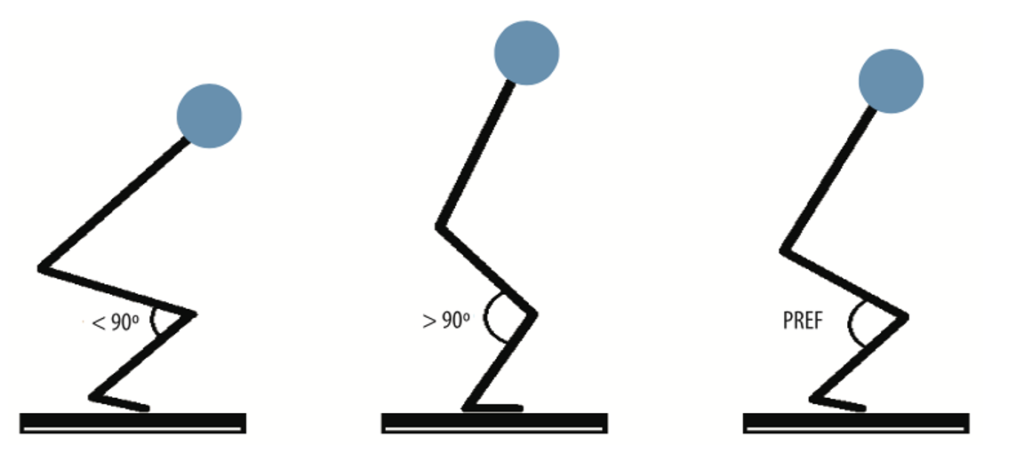Vertical jumping is an essential aspect of many sports. In volleyball and basketball, for example, jumping higher than your opponent gives you a significant competitive advantage. Volleyball players need to be able to block and spike, while basketball players need to be able to rebound well and finish tough shots over opponents. Most athletes know the basics of jumping, but few know what specific body mechanisms contribute to jump height. This article will discuss four key elements to vertical jump height:
- Squat depth
- Non-extension movements
- Arm swing
- Toe flexor strength
Understanding the mechanics behind each of these elements can help guide athletes in training regimens to better increase jump height.
Squat Depth
It seems obvious that squat depth is a part of jumping, but does the average athlete really consider how deep they squat during a jump? A study was done by Gheller et al. (2014) to determine the optimal squat depth to increase jump height. The depth was measured by the angle of the inside of the knee at the bottom of the squat. Participants were instructed to squat to three different depths, < 90◦, > 90◦, and their own preferred, natural squat depth, before jumping as high as they could. Surprisingly, the squats at < 90◦ produced higher jumps than squats at preferred depth. This is primarily due to these jumps producing the greatest takeoff velocity.
Non-Extension Movements
Non-extension movements are movements not related to any lower leg extension. In other words, these are movements seemingly unrelated to the core mechanics of the jump. However, some of these movements were found to have a significant impact on jump height. A study was done by Sado et al. (2020) regarding a running jump off one leg, where the amount of mechanical energy generated by various non-extension movements was calculated. This mechanical energy is converted to energy needed to produce higher jumps (Evert). Again, the velocity of the participants’ center of masses was recorded, from which these energies were calculated. During the takeoff phase, 59% of the increase in Evert was found to be due to the rotations of the stance-leg (jumping leg) calf, free-leg thigh, and the pelvis. The free-length thigh was the largest contributor, followed by the stance-leg calf, then the pelvis.
Arm Swing
The arm swing in a jump is intuitive for most people, but it is important to still understand its mechanics to better utilize the mechanism. During a jump, people swing their arms back as they squat down, then swing them back up as the propel vertically. How does this impact jump height? A study was performed by Hara et al. (2006) where participants stood on a force platform and jumped with and without swinging their arms. Every participant’s jump was higher with an arm swing. This is because the ground reaction force from the force platform increased with the swing, meaning the participant had pushed off the ground with greater force. This created a higher takeoff velocity, resulting in a greater height.

Toe Flexor Strength
Toe flexor strength is rarely considered when jumping, which is why it is important to understand. In this study by Yamauchi and Koyama (2020), participants stood on a toe grip dynamometer and squeezed the grip as hard as possible. The maximum force was recorded, then separately, participants jumped as high as possible. Participants with greater toe flexor strength also had greater jump heights. This is a lesser-known correlation that can help athletes gain a slight advantage over competitors by training their toe flexors.
This is not an all-intensive list of what goes into jumping but knowing how these mechanisms work can still guide an athlete’s training program. In today’s world, sports are so competitive; everyone is always looking for a leg up (pun intentional). Knowing the biomechanics behind jumping can truly lead to better sports performance.
Featured image from Giannis Anteokonumpo by Erik Drost under CC BY 2.0


